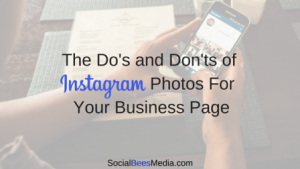— July 27, 2017

Mediamodifier / Pixabay
It’s no secret that in recent years, brand loyalty has started taking a nose-dive. According to McKinsey Research, only 13% of consumers in 2017 are brand loyalists who don’t shop around. And for the other 87%—well, they are utilizing other options. The evolution of the Internet has effectively tipped the power in favor of the consumers. And with a bastion of options readily available to online shoppers, consumers are now letting go of loyalty in favor of cheaper prices found elsewhere.
But the success of all ecommerce outlets is dependent on customer retention and loyalty. So, how can you combat this decline in loyalty? It starts with making sure your company’s brand strategy is doing its job. This means taking a look at the changing needs and wants of your consumers and considering an effective rebrand for your company. But before launching into a full-blown rebrand scheme, there are some important factors that need to be considered.
- Purpose
Before mapping out your entire rebrand strategy, you first need to establish the purpose of the rebrand. Why does your company need to rebrand itself now? If the answer is simple: your company is no longer converting customers into loyalists; ergo, it’s not growing at the rate you’d like it to—that’s fine. But you need to dig a little deeper in order to figure out the root cause of your rebranding strategy. So, why don’t you have a solid base of loyal customers?
For most companies, a lack of loyalty means that your brand is no longer evolving with the marketplace. Your brand’s message is no longer connecting with your customers. Hence, it’s most likely time to revamp your message.
- Message
Developing a clear message is paramount to establishing your brand’s identity. This is your rebrand starting point and should be an important focal point of nearly all digital marketing strategies. But in order to develop a successful message, you need to get inside of your consumers’ heads, a bit. Figure out what makes them tick. What do they want, and what are they looking for in a brand?
Consumer wants and needs morph right alongside cultural changes. Perhaps the decline in brand loyalty is symbolic of the fact that “being loyal” is no longer all that culturally relevant.
In the past, loyalty was valued and ingrained in most, if not all, institutions. Climbing the corporate ladder and devoting your entire life to one company was a noble and highly sought after position. But for new generations, it’s all about exploring your options.
You’d be hard-pressed to find a millennial with aspirations of finding a tenured-track profession. People of the past, married young, bought a house, built their picket fences, and settled down for the long haul. Now, however, more than 50% of millennials grew up with divorced parents, and more than 41% grew up with parents who were never married at all. Blended families and unconventional upbringings are the new norm.
For modern consumers, “new” is better than “known,” writes Forbes contributor Kathleen Kusek, and she’s right. So, to create a successful message in today’s market, a company needs to figure out how to blend exploratory elements of the “new” with traditional elements of authenticity.
- Logo
Once you’ve got a firm hold on your brand’s message—one that remains authentic to your company’s values while connecting with the new desires of consumers—it’s time to take a look at modern design trends. Because having a great message and a rooted identity is all well and good, but today’s digital marketplace is dependent on the visuals to carry out the message. Start with your logo design, which will be an integral part of your new website design and mobile app designs that are yet to come.
One of the biggest design trends in 2017 is simplicity. Simple lines, shapes, type and aesthetics are ruling the roost. The reason for this trend? —perhaps these elements are what best symbolize modernity and freshness with an underpinning of authenticity.
Take a look at eBay’s new logo design. The new logo is cleaner, simpler, and flatter. But by keeping the color palate, the same, the ecommerce giant invokes a sense of authenticity in its brand.
- Mobile App Design
Next comes the importance of your mobile app design. Today’s shoppers are increasingly on the move. In fact, 4 out of 5 ecommerce browsers are now using mobile platforms. Your logo will essentially be the face of your mobile app, so it’s important to make sure your logo design is solid before moving on to this element of rebranding.
Again, it’s important to take a look at some of the best ecommerce design trends for mobile. These include flat designs, micro UX transitions, tiled navigations, and most importantly, making sure that your design is device friendly. The subtly in each of these design trends is helping to reduce bounce rate, while also enhancing user activity and streamlining navigation.
- Website Design
But the success of your mobile app depends entirely on your website design. The first place shoppers are going to go to search for a product is online. This means that you need to establish an online presence and identity for your brand via your website.
This is the first touch-face for you to create brand loyalists. Once users are converted via your website design, they will then look to download mobile apps. Mobile apps will allow them to continue shopping on your platform, while having all of the information essentially right at their fingertips.
The best website designs of 2017 are the ones incorporating the same mobile app elements we discussed previously. They’re incorporating simple shapes, lines, type, and color palettes to invoke a sense of modernity and minimalism. They’re also keeping navigation easy and streamlined, and using simple animations to increase interactivity.
Sites are being organized with grid layouts to keep content clean and easy to understand. And most importantly, they’re utilizing the logo to establish their brand identity online.
For example, Apple’s website showcases simple, functional design elements and a well-established brand identity.
In short, the best designs out there are the ones making good use modern platforms to carry out authentic brand messages. And that’s where your ecommerce rebranding strategy needs to start. Once you understand the purpose for your rebrand, focus your time and energy on developing the new message you want to convey to your consumers. From there, utilize modern design elements and platforms to communicate your message to your consumers.
Remember, in the digital age, it’s all about the use of visuals to communicate and connect. This means that your brand’s success depends on effective and strong logo, website, and mobile designs, as well as the marketing strategies you use to communicate them. The new generation of shoppers wants to feel connected, and they want brands they can trust. But it’s up to you to convert them.
Digital & Social Articles on Business 2 Community
(34)
Report Post




